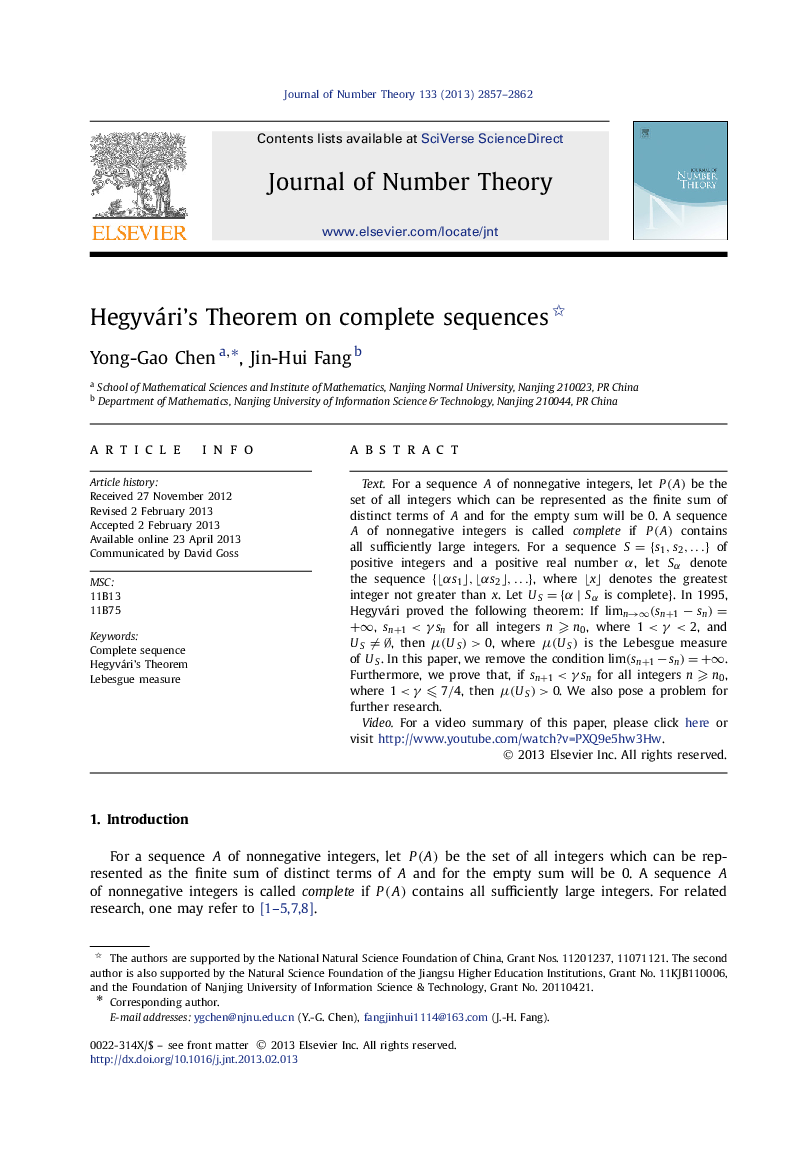| Article ID | Journal | Published Year | Pages | File Type |
|---|---|---|---|---|
| 4593991 | Journal of Number Theory | 2013 | 6 Pages |
TextFor a sequence A of nonnegative integers, let P(A)P(A) be the set of all integers which can be represented as the finite sum of distinct terms of A and for the empty sum will be 0. A sequence A of nonnegative integers is called complete if P(A)P(A) contains all sufficiently large integers. For a sequence S={s1,s2,…}S={s1,s2,…} of positive integers and a positive real number α , let SαSα denote the sequence {⌊αs1⌋,⌊αs2⌋,…}{⌊αs1⌋,⌊αs2⌋,…}, where ⌊x⌋⌊x⌋ denotes the greatest integer not greater than x . Let US={α|Sα is complete}US={α|Sα is complete}. In 1995, Hegyvári proved the following theorem: If limn→∞(sn+1−sn)=+∞limn→∞(sn+1−sn)=+∞, sn+1<γsnsn+1<γsn for all integers n⩾n0n⩾n0, where 1<γ<21<γ<2, and US≠∅US≠∅, then μ(US)>0μ(US)>0, where μ(US)μ(US) is the Lebesgue measure of USUS. In this paper, we remove the condition lim(sn+1−sn)=+∞lim(sn+1−sn)=+∞. Furthermore, we prove that, if sn+1<γsnsn+1<γsn for all integers n⩾n0n⩾n0, where 1<γ⩽7/41<γ⩽7/4, then μ(US)>0μ(US)>0. We also pose a problem for further research.VideoFor a video summary of this paper, please click here or visit http://www.youtube.com/watch?v=PXQ9e5hw3Hw.
